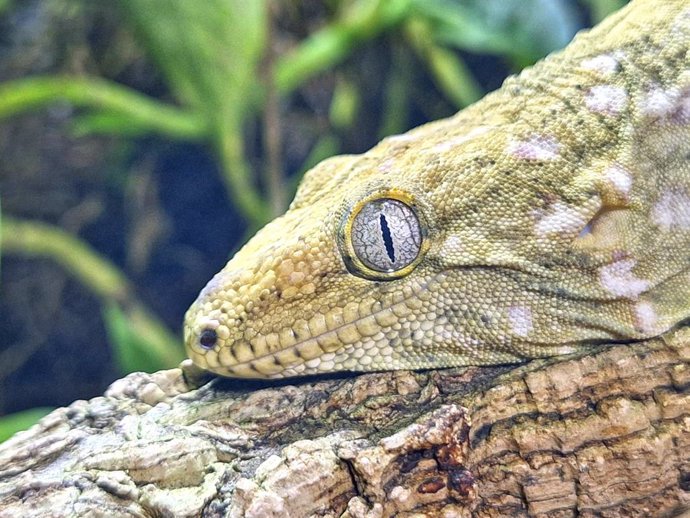giant gecko – TERRA NATURA
Oct. 4 () –
Biologists at the University of Maryland (UMD) have identified a hidden sensory talent in geckos which helps them detect low frequency vibrations.
A study published in ‘Current Biology’ describes this complementary utility of these animals’ sacculus: a part of their inner ear traditionally associated with maintaining balance and body position.
According to the researchers, this special “sixth sense” It also plays a complementary role to geckos’ normal hearing and the way they perceive the world around them. The team believes that this previously unrecognized auditory mechanism may also be present in other reptile species, which challenges existing ideas about how animal sensory systems evolved and diverged over time.
“The ear, as we know it, listens to sound transmitted through the air. But this ancient internal pathway, which is normally linked to balance, helps geckos detect vibrations that travel through media such as soil or water” said study co-author Catherine Carr, distinguished professor of biology at UMD.
“This pathway exists in amphibians and fish, and has now been shown to be conserved in lizards as well. “Our findings shed light on how the auditory system evolved from what is seen in fish to what is seen in land animals, including humans.”
The sacculus can detect weak vibrations ranging from 50 to 200 Hz, a spectrum well below what geckos typically hear through their ears. The researchers say this indicates that The saccule fulfills a different but complementary function to the normal auditory system of geckos.
While geckos can hear airborne sound, many other reptiles do not have that ability. The study’s lead author, Dawei Han, a postdoctoral researcher and former graduate student at UMD, says the discovery of the saccule’s role in gecko hearing may lead to a better understanding of communication and behavior. in other animals previously considered to have limited hearing abilities.
“Many snakes and lizards were thought to be ‘dumb’ or ‘deaf’ in the sense that they didn’t vocalize sounds or hear them well,” Han explained. “But it turns out they could be communicating through vibrational signals using this sensory pathway, “which really changes the way scientists have thought about animal perception in general.”
The existence of this shared sensory pathway in modern reptiles offers a unique window into the evolutionary history of vertebrate sensory systems, suggesting that the transition from aquatic to terrestrial environments likely involved more complex and gradual changes in the auditory mechanisms of what was previously thought.













![[Img #74022]](https://thelatestnews.world/wp-content/uploads/2024/10/Beyond-the-Earth-Rafael-Clemente-300x200.jpg)
Add Comment